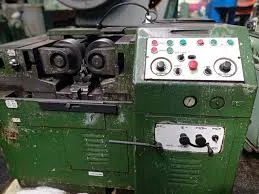
-
 Afrikaans
Afrikaans -
 Albanian
Albanian -
 Amharic
Amharic -
 Arabic
Arabic -
 Armenian
Armenian -
 Azerbaijani
Azerbaijani -
 Basque
Basque -
 Belarusian
Belarusian -
 Bengali
Bengali -
 Bosnian
Bosnian -
 Bulgarian
Bulgarian -
 Catalan
Catalan -
 Cebuano
Cebuano -
 Corsican
Corsican -
 Croatian
Croatian -
 Czech
Czech -
 Danish
Danish -
 Dutch
Dutch -
 English
English -
 Esperanto
Esperanto -
 Estonian
Estonian -
 Finnish
Finnish -
 French
French -
 Frisian
Frisian -
 Galician
Galician -
 Georgian
Georgian -
 German
German -
 Greek
Greek -
 Gujarati
Gujarati -
 Haitian Creole
Haitian Creole -
 hausa
hausa -
 hawaiian
hawaiian -
 Hebrew
Hebrew -
 Hindi
Hindi -
 Miao
Miao -
 Hungarian
Hungarian -
 Icelandic
Icelandic -
 igbo
igbo -
 Indonesian
Indonesian -
 irish
irish -
 Italian
Italian -
 Japanese
Japanese -
 Javanese
Javanese -
 Kannada
Kannada -
 kazakh
kazakh -
 Khmer
Khmer -
 Rwandese
Rwandese -
 Korean
Korean -
 Kurdish
Kurdish -
 Kyrgyz
Kyrgyz -
 Lao
Lao -
 Latin
Latin -
 Latvian
Latvian -
 Lithuanian
Lithuanian -
 Luxembourgish
Luxembourgish -
 Macedonian
Macedonian -
 Malgashi
Malgashi -
 Malay
Malay -
 Malayalam
Malayalam -
 Maltese
Maltese -
 Maori
Maori -
 Marathi
Marathi -
 Mongolian
Mongolian -
 Myanmar
Myanmar -
 Nepali
Nepali -
 Norwegian
Norwegian -
 Norwegian
Norwegian -
 Occitan
Occitan -
 Pashto
Pashto -
 Persian
Persian -
 Polish
Polish -
 Portuguese
Portuguese -
 Punjabi
Punjabi -
 Romanian
Romanian -
 Russian
Russian -
 Samoan
Samoan -
 Scottish Gaelic
Scottish Gaelic -
 Serbian
Serbian -
 Sesotho
Sesotho -
 Shona
Shona -
 Sindhi
Sindhi -
 Sinhala
Sinhala -
 Slovak
Slovak -
 Slovenian
Slovenian -
 Somali
Somali -
 Spanish
Spanish -
 Sundanese
Sundanese -
 Swahili
Swahili -
 Swedish
Swedish -
 Tagalog
Tagalog -
 Tajik
Tajik -
 Tamil
Tamil -
 Tatar
Tatar -
 Telugu
Telugu -
 Thai
Thai -
 Turkish
Turkish -
 Turkmen
Turkmen -
 Ukrainian
Ukrainian -
 Urdu
Urdu -
 Uighur
Uighur -
 Uzbek
Uzbek -
 Vietnamese
Vietnamese -
 Welsh
Welsh -
 Bantu
Bantu -
 Yiddish
Yiddish -
 Yoruba
Yoruba -
 Zulu
Zulu
thread rolling machine setup
Setting Up a Thread Rolling Machine A Comprehensive Guide
Thread rolling machines are essential tools in the manufacturing industry, particularly for producing high-quality threaded components. The setup of these machines is critical to ensure optimal performance and output. This article will guide you through the essential steps and considerations for setting up a thread rolling machine effectively.
Understanding Thread Rolling
Thread rolling is a manufacturing process where flat workpieces are transformed into threaded metal components through the application of pressure. This method enhances the strength and durability of the threads compared to traditional cutting processes. Thread rolling machines can produce various thread types, including external and internal threads, and are widely used for screws, bolts, and other fasteners.
Step 1 Preparing the Machine
Before starting the setup, it’s important to ensure that the thread rolling machine is clean and in good working condition. Here are some initial tasks
- Inspection Check for any wear and tear on the machine’s components, including rolls, gears, and bearings. Replace any damaged parts as necessary. - Lubrication Apply appropriate lubricant to moving parts to reduce friction and wear during operation. Follow the manufacturer’s recommendations for the best type of lubricant. - Calibration Ensure that the machine is properly calibrated. This involves checking the alignment of the rolls and adjusting them to meet the required specifications for the threading operation.
Step 2 Setting Up the Rolls
The rolls are the critical components in a thread rolling machine. The selection and setup of the rolls depend on the thread profile required and the material being used.
thread rolling machine setup

- Roll Selection Choose the appropriate rolls designed for the specific thread profile (e.g., UNC, UNF, metric). Rolls can be flat, cylindrical, or specially shaped, depending on the application requirements. - Mounting the Rolls Install the rolls on the machine, ensuring they are securely fastened. Proper mounting is vital for ensuring consistency in the thread formation. Follow the manufacturer’s guidelines for torque settings and installation procedures. - Roll Adjustment Adjust the position of the rolls to achieve the desired thread depth and pitch. This step often requires trial and error to perfect, so be prepared to make fine adjustments.
Step 3 Setting Up Material Feed
The material to be threaded must be fed into the machine correctly. This may vary based on the machine type and design.
- Workpiece Preparation Ensure the workpieces are clean and free from defects that could affect the threading process. If necessary, cut the material to the required length before feeding it into the machine. - Feed Mechanism Adjust the feed mechanism to control how quickly the material enters the rolling zone. This setting is crucial as an incorrect feed rate can lead to improper thread formation or machining failures.
Step 4 Testing the Setup
Once the machine is initialized and the rolls and feed are set, it’s important to conduct test runs.
- Initial Test Run Start with a low-speed test run using scrap material to observe how the machine operates. Check for any unusual sounds or vibrations that might indicate a problem. - Quality Inspection After the test run, inspect the threads produced for accuracy and quality. Verify the dimensions against the specifications and make necessary adjustments based on the results.
Conclusion
Setting up a thread rolling machine requires careful attention to detail, from selecting the right rolls to adjusting the feed mechanisms and conducting thorough tests. By following these steps, manufacturers can ensure that their thread rolling operations are efficient, producing high-quality threaded components that meet industry standards. Proper setup not only enhances productivity but also significantly minimizes waste and rework, contributing to the overall success of manufacturing processes.
